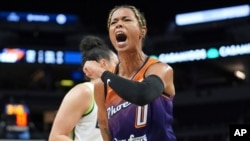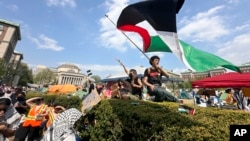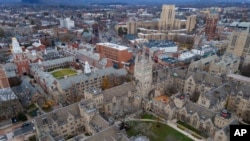Student Union
International students may be able to get jobs at school
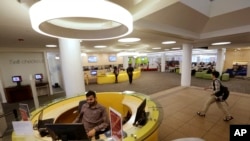
International students studying in the United States may be able to work on campus.
Jobs can include working in libraries, labs, food service and dormitories – but students will have to research the rules before applying for jobs, according to U.S. News & World Report. (September 2024)
Report says college rankings have the potential to mislead
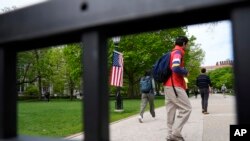
Each year, prominent lists of college and university rankings are compiled and released to the public, but a report conducted by NORC at the University of Chicago says those rankings have the potential to mislead.
Writing in Forbes, Vanderbilt University Chancellor Daniel Diermeier says changing methodologies can distort results, and profit motives can create doubt. He argues that rankings should be replaced by an objective rating system. (September 2024)
College athletes push for voter turnout while largely avoiding controversy as election nears
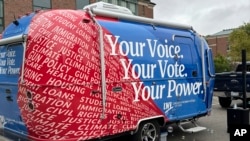
Lily Meskers faced an unexpected choice in the lead-up to the first major election she can vote in.
The 19-year-old University of Montana sprinter was among college athletes in the state who received an inquiry from Montana Together asking if she was interested in a name, image and likeness deal to support Sen. Jon Tester, a three-term Democrat seeking re-election. The group, which is not affiliated with the Tester campaign, offered from $400 to $2,400 to athletes willing to produce video endorsements.
Meskers, who is from Colorado but registered to vote in Montana, decided against the deal because she disagrees with Tester's votes on legislation involving transgender athletes in sports.
"I was like, OK, I believe that this is a political move to try to gain back some voters that he might have lost," Meskers said. "And me being a female student-athlete myself, I was not going to give my endorsement to someone who I felt didn't have the same support for me."
Professional athletes such as LeBron James, Colin Kaepernick and Stephen Curry have taken high-profile stances on hot-button topics and political campaigns in recent years, but college athletes are far less outspoken — even if money is available, according to experts in the NIL field. Being outwardly political can reflect on their school or endanger potential endorsement deals from brands that don't want controversy. It can certainly establish a public image for an athlete — for better or for worse — or lead to tensions with teammates and coaches who might not feel the same way.
There are examples of political activism by college athletes: A Texas Tech kicker revealed his support for former President Donald Trump on a shirt under his uniform at a game last week and a handful of Nebraska athletes a few days ago teamed up in a campaign ad against an abortion measure on the Tuesday's ballot.
Still, such steps are considered rare.
"It can be viewed as risky and there may be people telling them just don't even take that chance because they haven't made it yet," said Lauren Walsh, who started a sports branding agency 15 years ago. She said there is often too much to lose for themselves, their handlers and in some cases, their families.
"And these individuals still have to figure out what they're going to do with the rest of their lives, even those that do end up getting drafted," she added.
College coaches are not always as reticent. Auburn men's basketball coach Bruce Pearl has used social media to make it clear he does not support Kamala Harris, Trump's Democratic opponent in next week's presidential election. Oklahoma State football coach Mike Gundy once caused a stir with a star player for wearing a shirt promoting a far-right news outlet.
Blake Lawrence, co-founder of the NIL platform Opendorse, noted that this is the first presidential election in the NIL era, which began in July 2021. He said athletes are flocking to opportunities to help increase voter turnout in the 18-to-24 age demographic, adding that one of his company's partners has had 86 athletes post social media messages encouraging turnout through the first half of the week.
He said athletes are shying away from endorsing specific candidates or causes that are considered partisan.
"Student-athletes are, for the most part, still developing their confidence in endorsing any type of product or service," he said. "So if they are hesitant to put their weight behind supporting a local restaurant or an e-commerce product, then they are certainly going to be hesitant to use their social channels in a political way."
Giving athletes a voice
Many college athletes have opted to focus on drumming up turnout in a non-partisan manner or simply using their platforms to take stands that are not directly political in nature. Some of those efforts can be found in battleground states.
A progressive group called NextGen America said it had signed players in Arizona, Michigan, Nevada, New Hampshire, Pennsylvania and Virginia to encourage voting among young people. Another organization, The Team, said it prepped 27 college athletes in Pennsylvania, North Carolina, Arizona and Michigan to lead volunteer voter participation opportunities for students. The organization also said it got more than 625 coaches to sign a nonpartisan pledge to get their athletes registered to vote.
The Team's executive director is Joe Kennedy, a former coach who coordinated championship visits and other sporting events at the White House during President Barack Obama's administration. In early October, it hosted a Zoom event during which panelists such as NCAA President Charlie Baker and WNBA players Nneka Ogwumike and Natasha Cloud gave college athletes advice about using their platforms on campus.
In its early days, The Team seized upon momentum from the record turnout seen in the 2020 election. The NCAA that year said Division I athletes could have Election Day off from practice and play to vote. Lisa Kay Solomon, founder of the All Vote No Play campaign, said even if the athletes don't immediately take stands on controversial issues, it's important for them to learn how.
"It is a lot to ask our young people to feel capable and confident on skills they've never had a chance to practice," Solomon said. "We have to model what it means to practice taking risks, practice standing up for yourself, practice pausing to think about what are the values that you care about — not what social media is feeding into your brain, but what do you care about and how do you express that? And how do you do it in a way that honors the kind of future that you want to be a part of?"
Shut up and play?
Two years ago, Tennessee-Martin quarterback Dresser Winn said he would support a candidate in a local district attorney general race in what experts said was very likely the first political NIL deal by a college athlete.
There have been very few since.
The public criticism and fallout for athletes who speak out on politics or social issue can be sharp. Kaepernick, the Super Bowl-winning quarterback of the San Francisco 49ers, hasn't played in an NFL game since January 2017, not long after he began kneeling during the national anthem at games.
Meskers, the Montana sprinter, said political endorsements through NIL deals could create problems for athletes and their schools.
"I just think that NIL is going to run into a lot of trouble and a lot of struggles if they continue to let athletes do political endorsements," she said. "I just think it's messy. But I stand by NIL as a whole. I think it's really hard as a student athlete to create a financial income and support yourself."
Walsh said it's easier for wealthy and veteran stars like James and Ogwumike to take stands. James, the Los Angeles Lakers star, started More Than a Vote — an organization with a mission to "educate, energize and protect Black voters" — in 2020. He has passed the leadership to Ogwumike, who just finished her 13th year in the WNBA and also is the president of the Women's National Basketball Players Association. More than a Vote is focused on women's rights and reproductive freedom this year.
"They have very established brands," Walsh said. "They know who they are and they know what their political stance is. They know that they have a really strong following that -- there's always going to be haters, but they're also always going to have that strong following of people who listen to everything that they have to say."
Andra Gillespie, an associate professor at Emory University who teaches African American politics, also said it is rare that a college athlete would make a significant impact with a political stand simply because they tend to have a more regional platform than national. Even celebrities like Taylor Swift and Eminem are better at increasing turnout than championing candidates.
"They are certainly very beneficial in helping to drive up turnout among their fans," Gillespie said. "The data is less conclusive about whether or not they're persuasive – are they the ones who are going to persuade you to vote for a particular candidate?"
Athletes as influencers
Still, campaigns know young voters are critical this election cycle, and athletes offer an effective and familiar voice to reach them.
Political and social topics are not often broached, but this week six Nebraska athletes — five softball players and a volleyball player — appeared in an ad paid for by the group Protect Women and Children involving two initiatives about abortion laws on Tuesday's ballot.
The female athletes backed Initiative 434, which would amend the state constitution to prohibit abortions after the first trimester, with exceptions. Star softball player Jordy Bahl said on social media that the athletes were not paid.
A University of Montana spokesperson said two athletes initially agreed to take part in the NIL deal backing Tester. The school said one withdrew and the other declined to be interviewed.
For Meskers, deciding against the offer boiled down to Tester twice voting against proposals to bar federal funds from going to schools that allow transgender athletes to play women's sports, a prominent GOP campaign topic. Tester's campaign said the proposals were amendments to government spending packages, and he didn't want to play a role in derailing them as government shutdowns loomed.
"As a former public school teacher and school board member, Jon Tester believes these decisions should be made at the local level," a Tester spokesperson said. "He has never voted to allow men to compete against women."
Meskers said she believes using influence as college athletes is good and she is in favor of NIL. She just doesn't think the two should mix specifically for supporting candidates.
"I think especially as student athletes, we do have such a big voice and we do have a platform to use," she said. "So I think if you're encouraging people to do their civic duties and get up and go (vote), I think that's a great thing."
- By VOA News
Bloomberg Philanthropies says investment in low-income students fell short
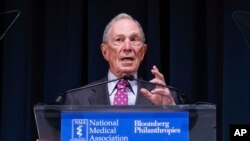
More than $140 million from billionaire Michael Bloomberg’s charitable programs have been spent getting talented low-income students into top colleges, but an analysis of those programs found they fell short of goals.
The Wall Street Journal took a look at the programs, their objectives, and how they haven’t led to the results Bloomberg Philanthropies wanted to see. (September 2024)
- By VOA News
Music students find community through 'international chat' program
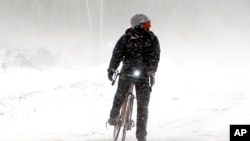
State University of New York at Fredonia is trying a new method to help international music students feel at home.
A professor at the school hosts informal chats -- known as "international chat" -- several times a semester. The goal, the school says in an article, is to function "as a study group session for international students facing challenges that are unique to international students."
Read the full story here. (October 2024)
- By VOA News
Portland State U has tough time enrolling international students
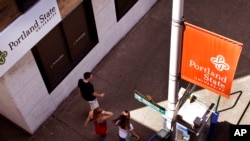
Portland State university has a problem with its international student enrollment, and it wants to find out why.
The school says it's found potential fraud in about 14% of international applications. It's also found that of the 46 students from India and Bangladesh it accepted, 20 sent deposits but only three actually enrolled.
Read the full story here. (October 2024)
- By VOA News
Student from Bangladesh pursues academic passions at Mississippi school
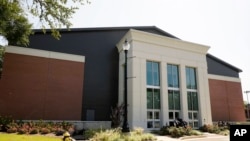
Shihab Hossain Saran, a student from Bangladesh studying at the University of Southern Mississippi, is studying marine science with an emphasis on physical oceanography.
Here, he talks about his successes and his visions for the future. (October 2024)
- By VOA News
International students reflect on life at Rutgers U.
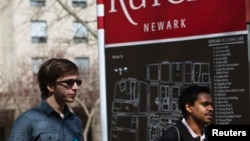
International students at Rutgers University in Newark, New Jersey, talk about their experiences and their goals in a story in The Daily Targum, the student newspaper.
Read the full story here. (October 2024)
- By VOA News
For international student, MBA is just the start
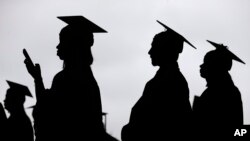
Vui Nguyễn, a Vietnamese student working toward an MBA at Cal State Fullerton, talks about her journey and her goals in an interview with CSUF News. (October 2024)
New US campus protest rules spur outcry from college faculty
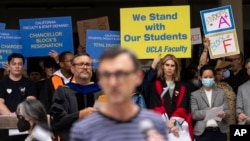
Dissent is thriving this fall at American colleges, and not just among student activists. With student protests limited by new restrictions, faculty have taken up the cause.
To faculty, new protest rules threaten freedom of speech — and the freedom to think, both central to university life. This semester, some of the most visible demonstrations have involved professors speaking up for the right to protest itself.
Last spring, pro-Palestinian tent encampments crowded schools and disrupted commencement plans, drawing accusations of antisemitism and prompting new limits.
At Indiana University, an “expressive activity policy” rolled out in August prohibits protests after 11 p.m., bans camping on campus, and requires pre-approval for signs. In defiance, each Sunday a group of faculty members, students and community members gather on campus for candlelight vigils that extend past the 11 p.m. deadline.
Russ Skiba, a professor emeritus who has attended the vigils, said the new restrictions are part of a larger movement to limit academic freedom on campuses.
In Indiana, the Republican governor in March signed a law increasing state oversight of public universities. The law, sponsored by a lawmaker who said colleges suffer from “monolithic thinking,” subjects faculty to post-tenure reviews over whether they are fostering diversity of thought and keeping their political views out of the classroom. Skiba and other Indiana professors widely opposed the bill, which they criticized as vague and subject to interpretation.
“Universities are bastions of free speech, but when you have a movement that is anti-democratic, one of the places that is most attacked is freedom of speech,” Skiba said.
Faculty members at colleges elsewhere around the country have pushed back on the new rules with protests, vigils and demands for explanation.
A group of Harvard University professors held a “study-in” at a campus library on Oct. 16 in support of pro-Palestinian students who were temporarily banned from the library for holding a similar demonstration. In September, a group representing University of California faculty filed a complaint alleging the system sought to chill their academic freedom and keep from teaching about the Israel-Hamas war “in a way that does not align with the University’s own position.”
To some professors, the protest restrictions are also a labor issue.
Colleges have been granting tenure to fewer professors, and facing pressure in some areas to do away with it altogether. Legislatures in several states have taken an interest in how topics around race, gender and history are taught. Protest guidelines handed down by administrators are another way the faculty's say in university affairs is being diminished, some professors say.
“We have to, as faculty, organize and demand the sort of shared governance that gives us a right to review and challenge these policies,” said Todd Wolfson, a journalism and media studies professor at Rutgers University and the president of the American Association of University Professors. “They’re not made by people coming out of the academic arm of our institutions.”
Tensions on campuses nationwide have been high since the war began over a year ago, when Hamas-led militants stormed into southern Israel, killing some 1,200 people, mostly civilians, and abducting around 250. Israel’s offensive has killed over 42,000 Palestinians, according to the Gaza Health Ministry, which does not say how many were fighters.
Colleges have been under tremendous pressure, including from Republicans in Congress, to protect students from discrimination while upholding free speech. Demonstrations last spring blocked foot traffic in parts of some campuses and included instances of antisemitic imagery and rhetoric. Some Jewish faculty members and students have said the protests made them feel unsafe.
In a message announcing new guidelines at the start of the semester, Northwestern University President Michael Schill said it needs to make sure everyone on campus feels safe and supported.
“Activities that lead to intimidation and impede an environment where dialogue and education can flourish cannot occur again,” he said.
Shirin Vossoughi, a Northwestern professor, was among 52 faculty members who signed an open letter opposing the school's new demonstration policy as caving to political pressure to silence certain types of activism. She said the rules crack down not just on free speech, but pro-Palestinian voices in particular.
During the protests last spring, some faculty members joined ranks with demonstrators. Others acted as mediators for students they see as under their care and protection. Faculty voted no confidence against leaders of schools including Columbia University, the University of Massachusetts, Brandeis University, and Cal Poly Humboldt over their handling of the protests.
At Northwestern University, Steven Thrasher was among three faculty members charged by university police for obstructing law enforcement during last spring's protests. He was suspended and removed from teaching this fall while under investigation by the university.
“The way that I saw my role was as a protector of the students' safety and of their ability to express themselves,” Thrasher said this fall. “I knew as soon as I started seeing violence happening towards students that I would do what I could.”
While schools say the rules are meant to limit disruptions, faculty members say they have the effect of neutralizing dissent.
“The whole point of a protest is to be seen and heard,” said Michael Thaddeus, a mathematics professor at Columbia University, where new rules require advance notice and prevent demonstrations that “substantially inhibit the primary purposes” of an area of campus. “Free speech rights aren’t served if you can only speak into the void and not have anybody hear you, and that includes the right to be seen and heard by people who don’t like what you have to say.”
Professors also drew a connection to the growing percentage of lecturers, adjuncts and professors who do not have tenure protections. Professors increasingly see the issue of speech and academic freedom as a labor issue as a result of the crackdowns, said Risa Lieberwitz, AAUP's general counsel.
“We’re seeing unionization growing and increasing,” she said. “I think to some extent it’s because it’s so important to organize, to claim democratic rights.”
Wolfson said professors must stand up for students’ rights to demonstrate and speak freely.
“Their freedom of speech rights are the lifeblood of the university,” Wolfson said. “We cannot have a university based on critical thinking and exploring questions if we’re going to clamp down on students’ rights to protest something they think is a massive problem, and if they see a way for the university to actually engage in it productively.”
- By VOA News
Miami U. student's fieldwork aids US officials in Serbia
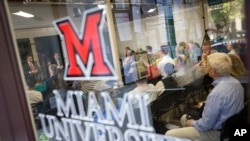
An international student at Miami University in Ohio is helping the Serbian government and the U.S. Embassy through her research.
Anastasija Mladenovska, who's originally from Macedonia and who speaks English, Russian, Serbian and French, is studying political science, finance and Russia. As part of that, she did field research in Belgrade, Serbia.
"By integrating herself into a diasporic community of Russians who had become displaced by the war, Mladenovska was able to get them to open up and start talking. They told her about their experiences fleeing Russia and about immigrating to Belgrade. They talked about their perspectives on the war, about the hope of returning home, and even about the possibility of needing to stay in Serbia permanently," an article from the school says.
Read the full story here. (October 2024)
Uncovering hidden costs for international students on campus
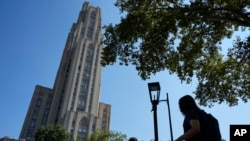
International students can face hidden costs once they arrive on campus. U.S. News & World Report breaks down some of them in this article.
- By VOA News
International students make their way at Marist College
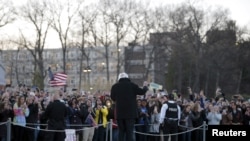
The Marist Circle, the student newspaper at Marist College in New York, has a piece about the special joys and challenges of being an international student.
Read it here. (October 2024)
- By VOA News
International student: Finding community made campus feel like home
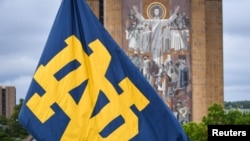
Yosibel Cabrera, a student from Nicaragua studying at the University of Notre Dame, says that finding community is the key to thriving on a U.S. campus.
Here, she writes about how she did it. (September 2024)




